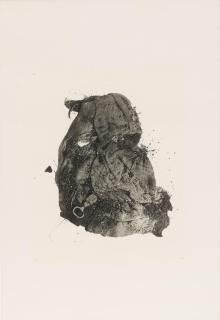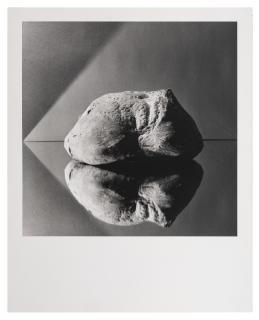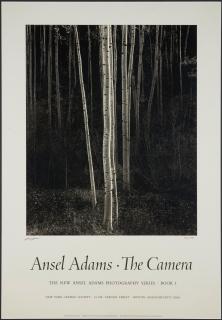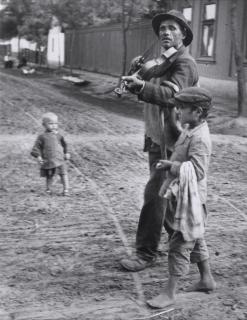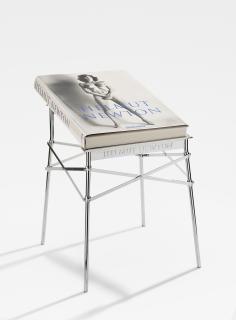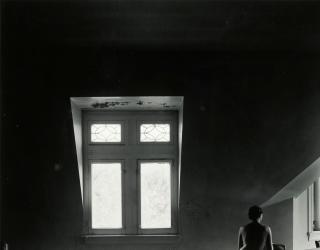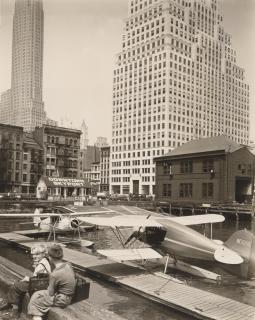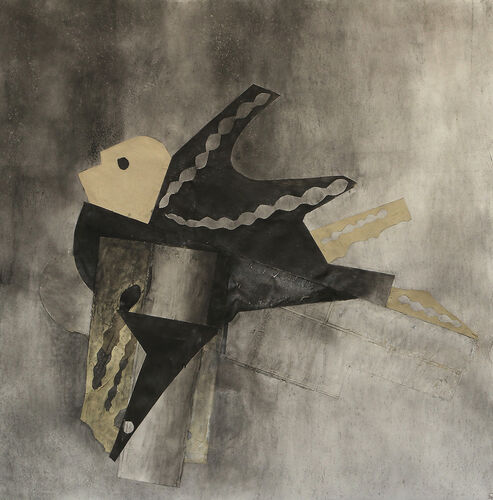Robert Frank 1924 - 2018
The artist Robert Frank
- Was a Swiss-American photographer and videographer.
- His illustrated book The Americans is one of the most influential of the 20th century.
- His works fetch six-figure sums at auction.
Robert Frank, born in Zurich in 1924 and died in Inverness, Canada in 2019, was a photographer and filmmaker. He left Switzerland at the age of 23 and moved to New York, where he quickly found a job as an assistant photographer for the fashion magazine Harper's Bazaar. He also worked for magazines such as Vogue and Fortune and travelled to a variety of European and South American countries for his assignments.
In 1955, Frank received the Guggenheim Fellowship and undertook a 9-month journey through the USA. Of the approximately 28,000 photographs he took, he selected 83 for his photobook The Americans, which is considered one of the most influential picture books of the 20th century. Frank portrayed America from the off by mingling with people and photographing everyday scenes without being observed. He contrasted the euphemistic photographs of his colleagues with the »real« America, the unadorned reality including poverty and racism. The motifs of his pictures are typical American symbols such as the national flag, highways and jukeboxes as well as the Americans themselves. It was important to him to photograph the people unnoticed so that they would not pose.
The Americans is particularly interesting because of Frank's family history: only by negating their Jewishness did he, his brother and his father receive Swiss citizenship. These circumstances led to the artist's sensitive approach to national thought and action – also with regard to the USA, which is known for its patriotism. Accordingly, the photo book was heavily criticised after its publication there in 1959. Frank previously had difficulties finding a US publisher at all, so it was initially published in France in 1958.
From 1959, Frank devoted himself to the moving image and made 31 films in the following decades, all of which he produced without financial support. His most important films include Pull My Daisie, based on a scene from Jack Kerouac's play The Beat Generation, and Cocksucker Blues, which accompanied the Rolling Stones on tour.
Der Künstler Robert Frank
- War ein schweizerisch-amerikanischer Foto- und Videograf.
- Sein Bildband The Americans ist einer der Einflussreichsten des 20. Jahrhunderts.
- Auf Auktionen erzielen seine Werke sechsstellige Beträge.
Robert Frank, 1924 in Zürich geboren und 2019 in Inverness, Kanada gestorben, war ein Fotograf und Filmemacher. Mit 23 Jahren verließ er die Schweiz und zog nach New York, wo er schnell einen Job als Assistenzfotograf für die Modezeitschrift Harper’s Bazaar fand. Daneben arbeitete er für Magazine wie die Vogue und die Fortune und bereiste für seine Aufträge eine Vielzahl europäischer und südamerikanischer Länder.
1955 erhielt Frank das Guggenheim Stipendium und unternahm eine 9-monatige Reise durch die USA. Von den rund 28.000 entstandenen Aufnahmen wählte er 83 für sein Fotobuch The Americans aus, welches als eines der einflussreichsten Bildbände des 20. Jahrhunderts gilt. Aus dem Off porträtierte Frank Amerika, indem er sich unter Leute mischte und unbeobachtet Alltagsszenen fotografierte. Den euphemistischen Fotografien seiner Kollegen hielt er das »echte« Amerika, die ungeschönte Realität samt Armut und Rassismus, entgegen. Motive seiner Bilder sind sowohl typisch amerikanische Symbole wie die Nationalflagge, Highways und Jukeboxen als auch die Amerikaner selbst. Ihm war es wichtig, die Personen unbemerkt abzulichten, damit diese nicht posierten.
The Americans ist insbesondere wegen Franks familiärer Vorgeschichte interessant: Nur durch Negierung ihres Judentums erhielten er, sein Bruder und sein Vater die Schweizer Staatsbürgerschaft. Diese Umstände führten zu einem sensiblen Umgang des Künstlers mit nationalem Denken und Handeln – auch mit Blick auf die für ihren Patriotismus bekannte USA. Demgemäß wurde das Fotobuch nach seiner dortigen Veröffentlichung 1959 stark kritisiert. Zuvor hatte Frank Schwierigkeiten, überhaupt einen US-amerikanischen Verleger zu finden, sodass es zunächst 1958 in Frankreich publiziert wurde.
Seit 1959 widmete sich Frank dem Bewegtbild und drehte in den folgenden Jahrzehnten 31 Filme, die er allesamt ohne finanzielle Unterstützung produzierte. Zu den wichtigsten filmischen Arbeiten zählen zum einen Pull My Daisie, angelehnt an eine Szene aus Jack Kerouacs Theaterstück The Beat Generation und zum anderen Cocksucker Blues, der die Rolling Stones auf ihrer Tour filmisch begleitete.
Robert Frank in News and Exhibitions
Like a love poem: Robert Frank's experimental photo book
Robert Frank was an influential photographer of the 20th century. In Robert Frank: Mary's Book, the Museum of Fine Arts Boston presents a very personal photo book from the artist's younger years. The show opens on December 21.
Robert Frank in News and Exhibitions
Wie ein Liebesgedicht: Robert Franks experimentelles Fotobuch
Robert Frank war ein einflussreicher Fotograf des 20. Jahrhunderts. Das Museum of Fine Arts Boston stellt in Robert Frank: Mary’s Book ein ganz persönliches Fotobuch aus den jungen Jahren des Künstlers vor. Die Schau eröffnet am 21. Dezember.





























